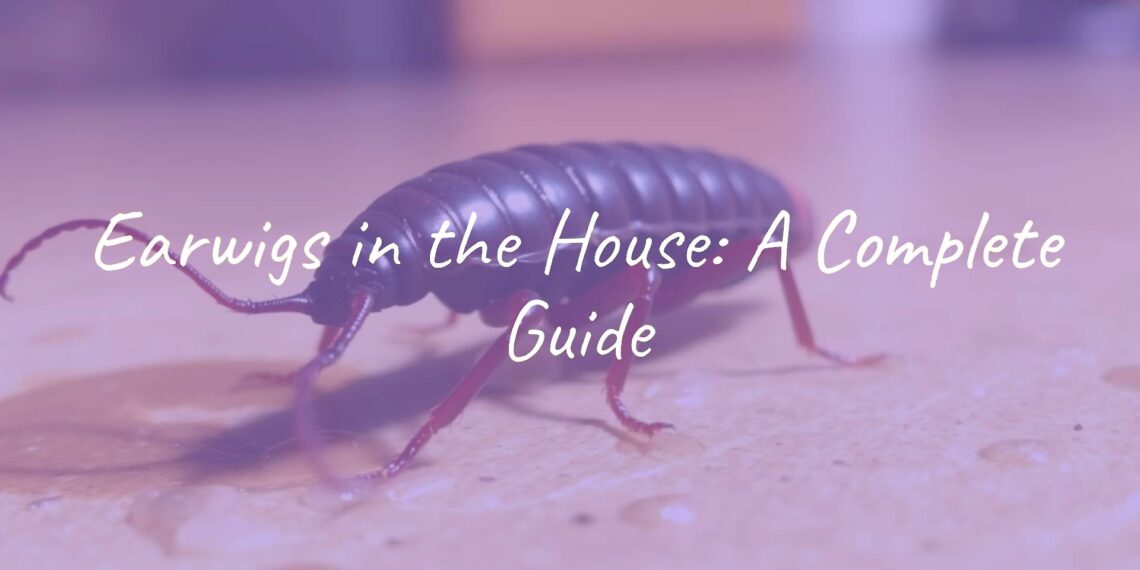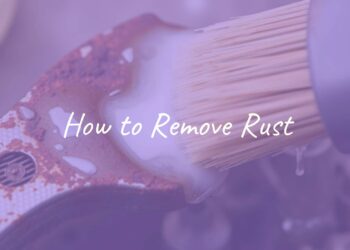Spotting earwigs inside your home can be unsettling because of their unique pincers and the myths surrounding them. Though earwigs mostly live outdoors, they sometimes end up inside. Why do they come into houses, and how can we deal with them? The reassuring fact is that earwigs aren’t dangerous to people or buildings-they’re more of a bother than anything. This guide explains what earwigs are, why they come indoors, how you can get rid of them, and what you can do to stop them from returning.
What Are Earwigs and How Do They Get In?
Earwigs, sometimes called “pincher bugs,” are slender insects easy to identify by the pincers on their back end. Most earwigs are about 5/8 inch long, dark brown, with a reddish head and pale legs. Their pincers look scary but are mainly for defending themselves or hunting small prey. Earwigs are common throughout North America but prefer to live outside in damp, protected spots.

During the day, earwigs hide in moist areas like under mulch, leaves, logs, firewood, boards, and stones. At night, they come out to eat. Their diet includes dead plant material, other insects, and live plants such as veggies and flowers. Because they eat so many things, they can adapt to different places.
Why Do Earwigs Come Inside?
Earwigs come into homes when they’re looking for shelter from tough weather or searching for food and a safe place to hide. Main reasons include:
- Seeking dryness and safety during bad weather (heat, drought, heavy rain)
- Searching for food scraps
- Accidentally being brought in through items such as boxes, newspapers, or potted plants stored outside
If earwigs find a damp, dark place inside, they might stay.
How Do Earwigs Get Indoors?
Earwigs sneak in through even the tiniest gaps. Main ways include:
- Cracks and gaps in doors, windows, and foundations
- Poorly sealed or unscreened vents
- Access doors to crawlspaces

Earwigs can fit through very small openings, so blocking up these spots helps keep them out.
What Attracts Earwigs Inside?
Earwigs come inside looking for three things: food, moisture, and shelter. If a home offers these, it becomes an inviting place for them.
Food
Earwigs aren’t fussy eaters. Outside, they eat rotting plants, live greenery, or fallen fruit. Inside, they’ll eat crumbs, food left on counters, or crumbs in cupboards. Regular cleaning reduces their food options, making your house less appealing.
Moisture
Moisture is a huge draw for earwigs. Outdoors, they live in damp soil or wet leaves. Inside, they like places that are humid and wet, such as under sinks, in basements, and in crawlspaces. Leaks and condensation provide perfect conditions for them. Dirt-floor basements or crawlspaces without proper barriers or dehumidifiers are especially attractive to earwigs.
Shelter
Earwigs hide in dark, protected spaces during the day-under logs outdoors, or in clutter, basements, and behind appliances inside. Porch lights can pull them closer to entry doors at night, making it easier for them to slip indoors.
How Does Weather Affect Earwigs?
Earwig activity indoors often increases during:
- Heat waves or dry spells (seeking moisture inside)
- Heavy rain (escaping floods)
- The start of spring and summer (when they become more active)
- Fall and winter (seeking warmth indoors)
Are Earwigs Dangerous in the House?
Earwigs might look intimidating, but they aren’t dangerous to humans or pets. Most worries about them come from old stories and myths.
Do Earwigs Bite or Sting?
Earwigs don’t bite or sting people, and the myth that they crawl into ears to lay eggs is simply untrue. While their pincers can pinch if handled, it’s mild and doesn’t usually break the skin. They don’t go out of their way to approach people.
Are Earwigs Harmful to People or Pets?
Earwigs don’t carry diseases and don’t cause structural damage to homes. Indoors, they’re just a nuisance, not a hazard. Outdoors, they sometimes eat plant leaves, flowers, or fruits, but can also help by eating dead matter and other garden pests like aphids and spider mites. Indoors, they cause no real issues.
Where Do Earwigs Hide Indoors?
When earwigs are inside, they look for damp, dark, and undisturbed places. Listening for their favorite hiding spots can help you deal with them.
Common Hiding Places
| Location | Why Earwigs Like It |
|---|---|
| Basements | Moist and dark conditions |
| Under sinks | Possible leaking pipes and condensation |
| Bathrooms | Humidity and warmth |
| Crawlspaces | Damp and undisturbed |
| Near doors and windows | Entry points from outside |
| Piles of clutter (newspapers, boxes) | Hidden and dark |

Earwig Season and Indoor Infestations
From late spring to summer, earwigs are more likely to enter homes as outdoor conditions push them to seek better shelter. If you see more earwigs inside during these months, it usually means they are searching for moisture or escaping bad weather.
While earwigs don’t usually thrive long-term inside homes, any damp spots will encourage them to stay longer. By knowing when they are most active, you can focus your prevention methods during peak seasons.
How to Get Rid of Earwigs in Your House
Even if earwigs aren’t dangerous, seeing them indoors is unpleasant. Here are some practical ways to remove them and discourage their return.
Homemade Traps
- Rolled-up newspaper or damp cardboard: Place these near where you’ve seen earwigs; they’ll hide inside. Remove and dispose of each morning.
- Soapy water trap: Set out a shallow dish of soapy water below a light at night-earwigs will be drawn in and drown.
- Soy sauce and oil trap: Mix equal parts soy sauce and oil in a shallow container; the scent draws earwigs in, and they get stuck.
Other Removal Methods
- Vacuum daily to remove earwigs and the crumbs they eat.
- Use a dehumidifier or fan in damp areas to dry things out.
- Repair leaking plumbing and improve ventilation in kitchens and bathrooms.
- Spray a 50/50 rubbing alcohol and water mix directly on earwigs.
- Put strong-smelling essential oils (like peppermint, eucalyptus, or lemon) in problem areas to repel earwigs.
- In severe infestations, sprinkle boric acid powder where earwigs hide (keep away from pets or children).
When to Call a Professional
If you spot large numbers of earwigs or home methods aren’t enough, pest control services can help. Professionals can find where the earwigs are coming from and treat both indoor and outdoor areas effectively. After the initial problem is solved, you can use prevention tips to keep earwigs away for good.
How to Prevent Earwig Infestations
The best way to keep earwigs away is to make your home less attractive to them by reducing moisture, cutting out food sources, and blocking entry points.
Reduce Moisture and Food Sources
- Fix leaks and dripping pipes right away
- Use dehumidifiers in basements and crawlspaces
- Ventilate bathrooms and kitchens well
- Add a vapor barrier to crawlspaces if needed
- Vacuum and clean regularly to remove crumbs, spills, and clutter
- Store food in sealed containers
Seal Entry Points
- Seal cracks and gaps in foundations and walls
- Add caulk to window sills and weather stripping on doors
- Use door sweeps to close gaps under doors
- Ensure window and foundation vent screens are intact and fit well
Outdoor Tips to Deter Earwigs
- Clear leaves, mulch, and debris away from your house foundation
- Keep mulch and plants 6-12 inches from your foundation
- Store firewood away from the house and off the ground
- Pick up fallen fruit and decaying plant material in your yard

By following these indoor and outdoor steps, you can make your home much less welcoming to earwigs.
Earwig Frequently Asked Questions
What should I do if I find an earwig infestation?
- Stay calm and check how many earwigs you are dealing with and where they are hiding (basement, bathroom, kitchen, near the foundation).
- Remove moisture by fixing leaks and using dehumidifiers.
- Seal up all gaps and cracks where earwigs could get in.
- Move piles of leaves, mulch, and firewood away from the house.
- Use homemade traps or vacuuming to physically remove earwigs indoors.
- If the problem is big or won’t go away, call a pest control company to handle it and advise you on future prevention.
These steps will help you deal with earwigs and keep your home comfortable and pest-free.
















![What to with Scrap Metal? [infographic]?](https://facts-homes.com/wp-content/uploads/2019/07/645413-POPYOV-391-120x86.jpg)





